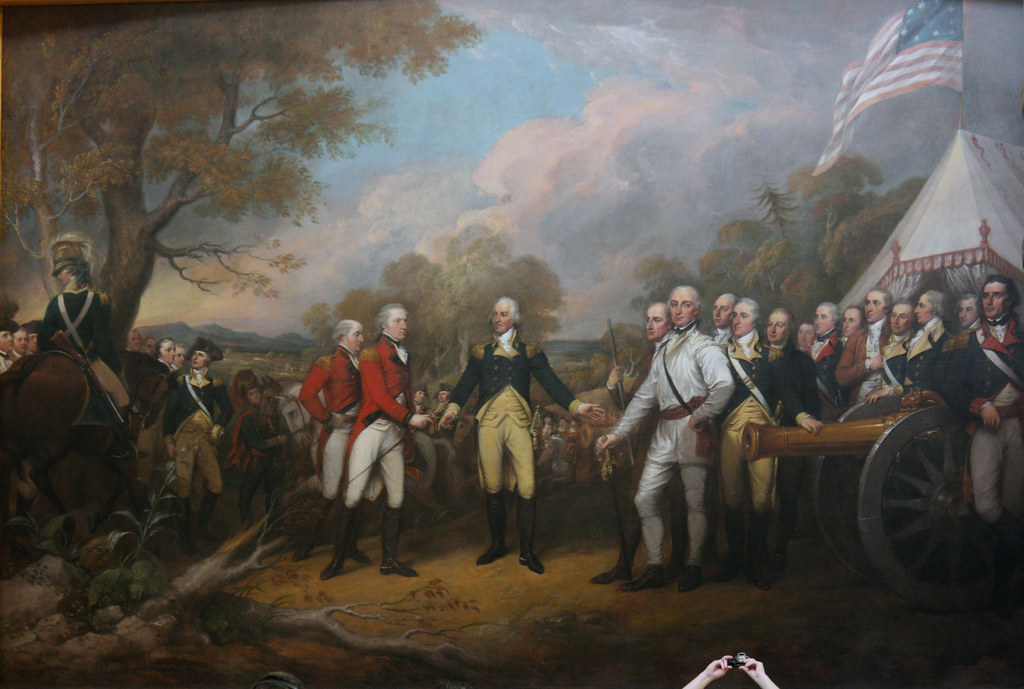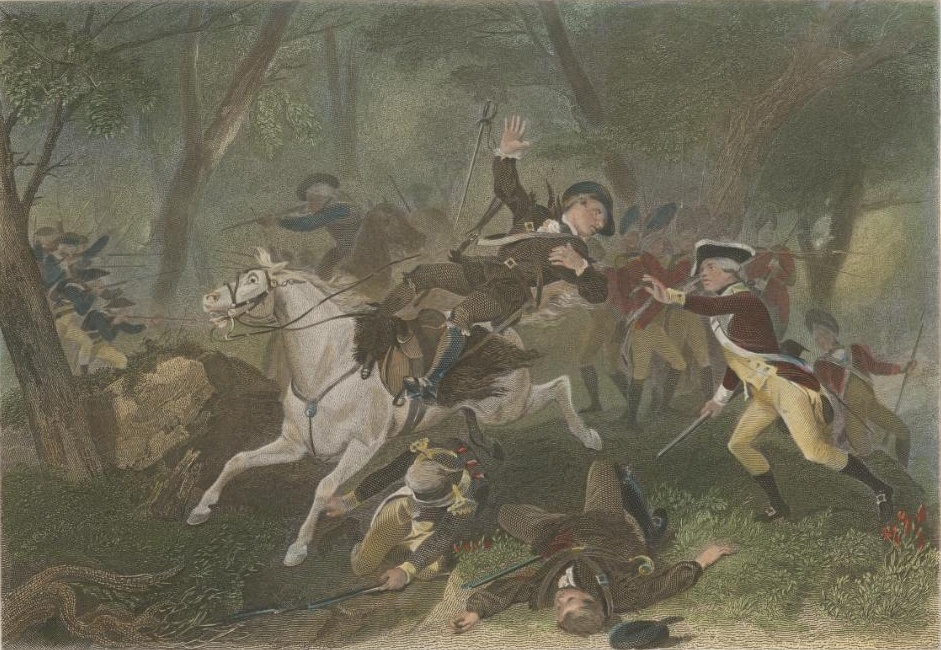Capture of Fort Ticonderoga
May 10, 1775
Post Ticonderoga, along Lake Champlain in northeastern New York, was in an essential situation among Canada and the Hudson River Valley. By and by, the British, who might not have treated the defiant Americans in a serious way, decided to safeguard it softly, with a post of somewhere around 50 men.
The Green Mountain Boys, a Vermont-based civilian army, chose to exploit the British limitation. At day break on May 10, a power of under 100 minute men, drove by Ethan Allen and Benedict Arnold, crossed the lake and amazed the as yet resting British. It was the primary genuine triumph of the Revolutionary War, and energized the pilgrims. Significantly more critically, the Americans had the option to seize and reuse the fortification's guns and transport them to Boston, for use in the attack of British-held Boston
Battle of Saratoga
September 19 - October 7, 1777

At Saratoga, quite possibly the most conclusive clashes of the Revolution, the American crushed British soldiers propelling toward the south from Canada, and kept them from holding onto control of New York's Hudson River Valley. As British General John Burgoyne and a multitude of around 7,500 British troopers traveled south, American General Horatio Gates and great many Americans looked for him at Bemis Heights, only south of Saratoga, where they had fabricated fortresses and situated cannon.
The British, who were supported by 500 German troopers, supported weighty setbacks in the underlying showdown on September 19, and ended up caught in the wild with a decreasing inventory of food. Frantic for an exit plan, Burgoyne mounted a second assault on October 7, however the Americans — whose positions by then had expanded to 13,000 — pushed him back.General Benedict Arnold, drove a charge that caught a German redoubt, despite the fact that Arnold supported a genuine leg twisted simultaneously. In the wake of trying and, sadly, failing to escape, the British gave up on October 17.
Battle of Kings Mountain
October 7, 1780

Kings Mountain is definitely not a notable skirmish of the Revolutionary War, yet it was basic to halting the force that British General Charles Lord Cornwallis had worked by catching Charleston, South Carolina in May 1780. A couple of months after that triumph, Cornwallis sent Major Patrick Ferguson to enroll a supporter state army to safeguard Cornwallis' flank as he progressed through the South. Be that as it may, Ferguson ran into an intense, ingenious enemy — American minute men from the South Carolina backwoods and Appalachian Mountains, who were break shots and talented in secretive development.
The two powers 900 Americans directed by Colonel Isaac Shelby and others, and 1,105 under Ferguson on the British side met on a rough peak in western South Carolina. The Americans went after Ferguson's situation from all sides, shooting Ferguson off his pony and killing him, and his power gave up in the wake of experiencing weighty losses.
Battle of Cowpens
January 17, 1781
When the British battled to take control of the South, American General George Washington sent powers headed by General Nathaniel Greene into South Carolina to foil them, prompting the basic skirmish of Cowpens.Greene dispatched a group of 1,065 drove by Brigadier General Daniel Morgan to south of the Catawba River, determined to cut British stock lines. To counter Morgan, British Commander General Cornwallis sent a power of 1,150 men instructed by Lieutenant Colonel Banastre Tarleton, a world class official with a ruthless standing for permitting his powers to slaughter Americans who attempted to give up.
Tarleton pursued Morgan's powers, however didn't have great knowledge about the number of men the Americans that had — a burden that demonstrated basic. The different sides defied each other at Cowpens, a field close to Thicketty Creek. In a sly move, Morgan coordinated a line of his men to fire two or three volleys and afterward retreat, making the deception that the Americans were escaping in alarm. Whenever The Tarleton's powers pursued them, they ran into a shrinking blast of gunfire from a different line of American marksmen that Morgan had stowed away, trailed by a cavalry assault lead by William Washington, a far off cousin of George Washington, that directed the British.The loss at Cowpens constrained Cornwallis to surrender his work to take South Carolina. He sought after Greene's men into North Carolina, where he crushed Greene at the Battle of Guilford Courthouse in March 1781. However, Cornwallis' military was so drained by then that he needed to get back to Virginia to rest and yet again prepare his officers. That set out a freedom for General Washington to trap him, and set up the Battle of Yorktown.
Battle of Yorktown
September 29 - October 19, 1781
Following six years of war, the British and the Americans resembled a couple of depleted fighters, battling to endure the last round. The British were plagued by an absence of public help at home, while the Americans were troubled with war obligation, food deficiencies and hanging confidence. Something needed to give. General George Washington chose to go for a knockout.
Washington had the choice of going after the British occupiers in New York City, however all things considered, he and Lt. General Comte de Rochambeau, who had large number of French officers under his order, selected to walk south to Yorktown, Virginia, where General Cornwallis and his 9,000 soldiers were resting.As 8,000 American and French officers went to Virginia, the French armada crushed the British Navy in the Battle of the Capes and held onto control of the mouth of the Chesapeake Bay, keeping British boats from acting the hero. By late September, Washington and de Rochambeau had arrived at Yorktown, where they were joined by another almost 12,000 civilian army and American and French officers.
They dug channels around the fortresses that Cornwallis had worked to safeguard his military. Then, half a month after the fact, the Americans started besieging the British. The evening of October 14, the Americans and French went after the British redoubts, catching a portion of the fortresses. On October 17, the British sent an official with a white tissue to examine give up terms, and after two days, the last significant skirmish of the Revolution was finished.